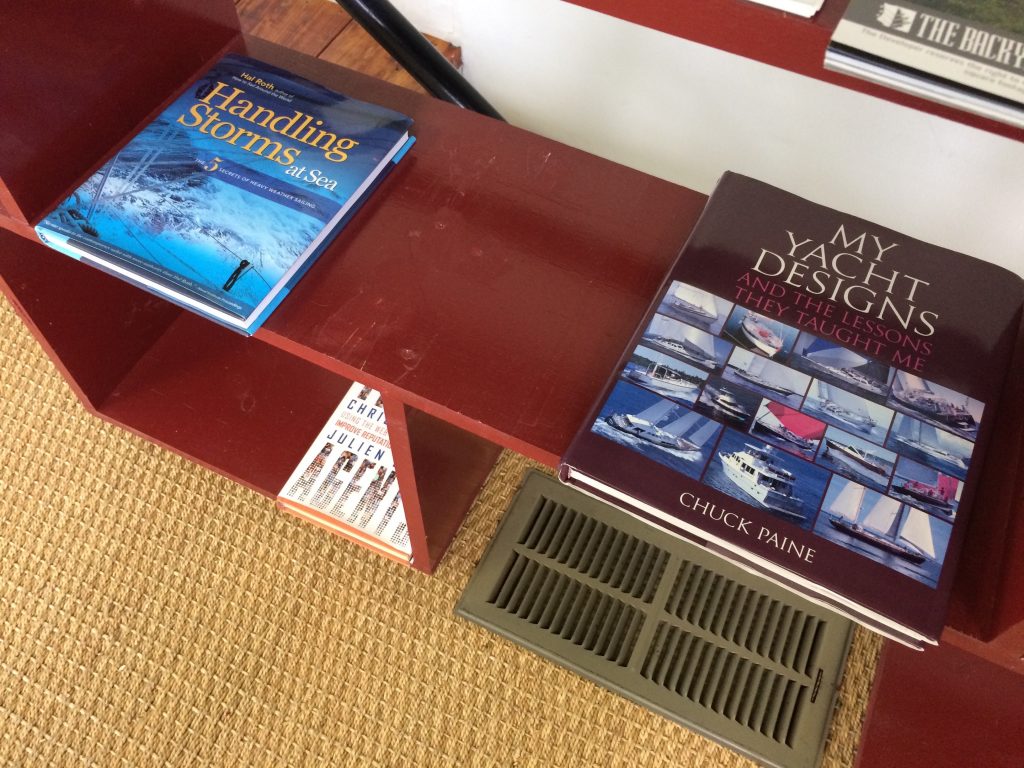For some reason, the mods at Sailnet felt that my groundbreaking “Production Boats and the Limits” thread, which has almost 500K views, was getting a bit “unwieldy”. I have no idea what that means, and I think that it’s a very lame and CruisersForum-y thing to do. Hell, CF didn’t even close my “Production Boats Fit For Blue Water” thread – on CF! It too (as most of my forum threads tend to be) is easily one of the most viewed on CF. But whatever.
Knowing that most real sailors will be worried that they will never be able to get definitive advice on this subject now that my SN thread is closed, let me just put this final nail in the coffin of the Blue Water Chuckleheads Creed in so many threads on so many forums…
If you are looking to purchase a “blue water” boat for cruising and have heard all kinds of things on forums that seem to cast modern production boats in a negative light, you should look for the CE Category A rating to give you some guidance from professionals who actually know something.
Here it is stated very simply from the Beneteau site:
Category A – Ocean: covers largely self-sufficient boats designed for extended voyages with winds of over Beaufort Force 8 (over 40 knots), and significant wave heights above 13 feet, but excluding abnormal conditions such as hurricanes.
I’ve bolded some important distinctions above…wind OVER F8 and waves ABOVE 13′. So we are talking F9-F11 conditions, excluding hurricanes (F12) and abnormal conditions (like clumsily hitting rocks, containers, and Krakens at will). And finally “extended voyages” does NOT mean “coastal cruising” as many chuckleheads like to disparagingly label these boats.
Now, though you’ll often hear on forums that conditions like this (F10, F11, etc.) are somehow “common” and that only traditional “blue water boats” can handle these conditions with ease – if you are at all a prudent cruising skipper and pay attention to the weather, you will very, very rarely (likely never) see those conditions to begin with – at least as a sustained storm at sea.
To give you a bit more perspective on this, here is the definition of a tropical cyclone:
Tropical Storm: A tropical cyclone in which the maximum sustained surface wind speed (using the U.S. 1-minute average) ranges from 34 kt (39 mph or 63 km/hr) to 63 kt (73 mph or 118 km/hr).
Compare this with the Beaufort ratings above and think about how often you get hit by tropical-cyclone-strength conditions while cruising.
More proof of this comes from one of the most prolific sailors in the world, Hal Roth, in his seminal book “Handling Storms at Sea” (I’ve read it and you should too). Here it is on my bookshelf in my office alongside another great book signed by Chuck himself…
Hal has this to say about the violent storms people like to talk about on forums:
During the past 40 years I’ve sailed some 200,000 miles on the world’s oceans either by myself or with my wife. Yet in all these seagoing passages – some up to 52 days in length – I’ve never seen prolonged winds of hurricane strength and only one violent storm of Force 11. My point…is that violent weather is infrequent and that with care in planning bad days can be avoided or certainly minimized.
So, in relation to “blue water” boats being able to “handle violent survival storms”, there are 3 takeaways from the above:
1. The CE Category A rating implicitly covers F9-F11. And you will likely see F9 and maybe some F10 if you’re out long enough. But the boat is designed and built to handle that. And Hal’s book will tell you everything you need to do to stay safe if it happens.
2. According to both the Beaufort Scale and Roth himself, storms of F11 are exceedingly rare (just one in his 40 years and 200K miles of cruising). And F12 just doesn’t happen unless you go looking for it.
3. Unless you’re a very poor skipper, you should pretty easily be able to avoid these more extreme conditions – especially as a cruiser. You just need to practice some “care and planning”.
So, don’t worry about the age old “blue water” boats debates you see on forums. They are meaningless. Look for the Category CE ratings on more modern boats (the rating goes back to 1998). Then get a good survey on whatever boat you are looking at, prepare you and your boat to deal with heavy weather, and plan and pay attention to the weather as you cruise. This is what real sailors like Hal Roth do. And they tend to stay out of trouble.
So, you can listen to experienced nautical architects and engineers, and sailors with decades and hundreds of thousands of miles under their keel – or you can listen to forum posters who seem to get into trouble A LOT due to what can only be an obvious lack of “care and planning” according to Roth.
I don’t think that’s a difficult call to make.


